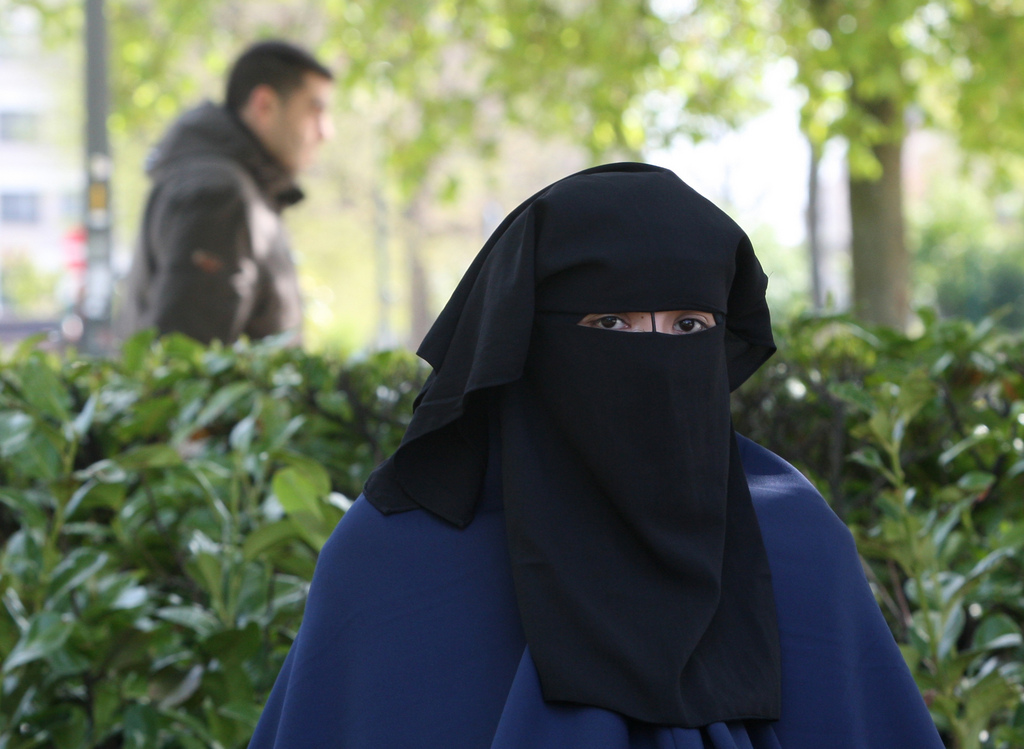Saudi Arabia asks citizens to respect Ticino burka ban

In an official statement, the Saudi Arabian Embassy in Bern has reminded its citizens that wearing a burka or niqab will soon be illegal in canton Ticino.
From July 1, the ban will come into effect in public places in the Italian-speaking canton. The embassy posted its advisory on Twitter:
pic.twitter.com/AKE2D9eJxUExternal link
— السفارة في بيرن (@KSAembassyCH) June 6, 2016External link
This is what the tweet said:
“The embassy wishes to emphasise that the Ticino cantonal authorities in south eastern Switzerland have announced that as of July 1, 2016 they will start to enforce the burka (niqab) ban in public places in the canton, including in Lugano, Locarno, Magadino, Bellinzona, Ascona and Mendrisio. They have also said that the fine for violating the ban can be as much as CHF1,000 [$1,035] or more for repeat offenders. As school holidays [in Saudi Arabia] are coming up, the embassy reminds all honourable citizens of the necessity to respect and conform to Swiss rules and regulations in order avoid all problems.”
In 2013, nearly 65% of Ticino’s voters approved an initiative to forbid people from wearing clothing that covers the face. The legislation does not specifically mention burkas or Muslims, but states that “nobody in public streets or squares may veil or hide their face”. It doesn’t apply to headscarves.
The ban has attracted much attention and criticism, with many questioning whether it makes sense when there are so few burka and niqab wearers living in Ticino. The new law also applies to tourists.
There are similar bans in France and Belgium, and some rightwing groups in Switzerland have called for a nationwide ban.
Burka, niqab, hijab
The burka is the strictest interpretation of this religious dress prescription. It covers the entire body from the top of the head to the feet and is worn in Afghanistan. There is a grille or mesh window of cloth or horsehair over the eyes for women to see out of.
The niqab is a face veil covering the hair, neck, and face, but not the eyes. The niqab is worn mainly by women from the Gulf states, but also in other countries.
The hijab is a scarf covering the hair and neck but not the face. In some regions it is worn in combination with a niqab.
How would you feel if a government fined you for what you were wearing?

In compliance with the JTI standards
More: SWI swissinfo.ch certified by the Journalism Trust Initiative




You can find an overview of ongoing debates with our journalists here . Please join us!
If you want to start a conversation about a topic raised in this article or want to report factual errors, email us at english@swissinfo.ch.